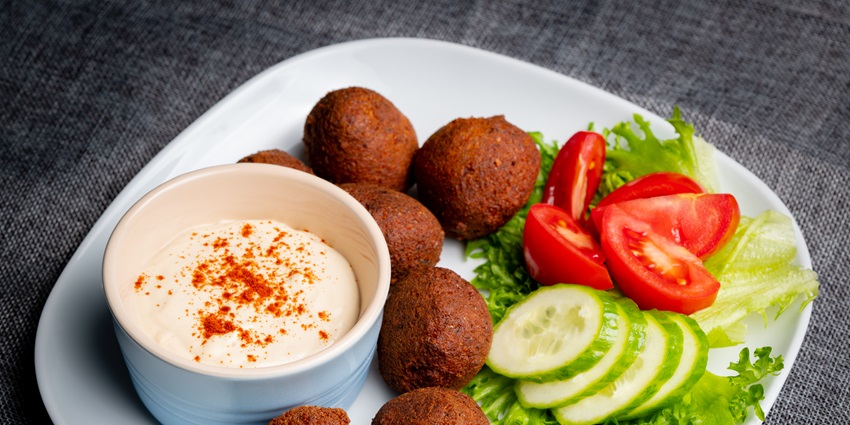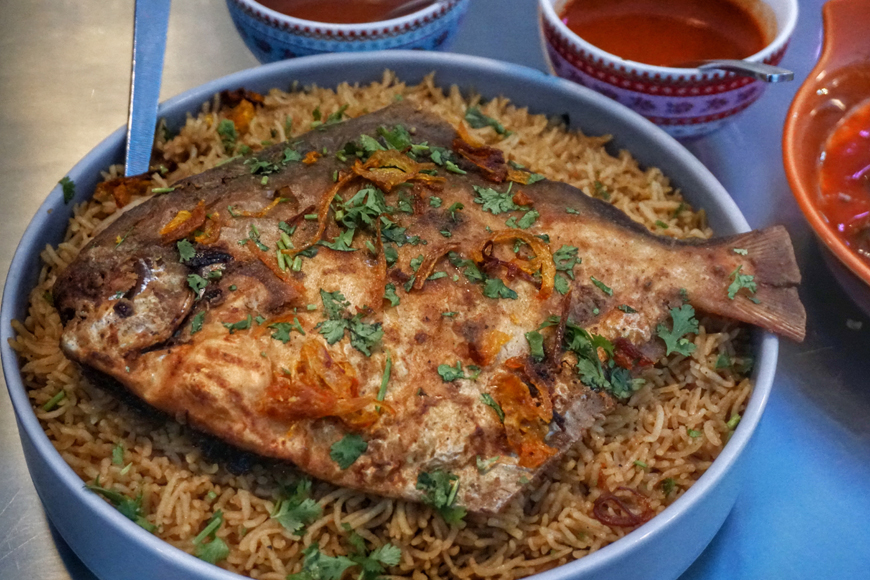Kuwait’s cuisine is a tapestry woven with threads of tradition, trade, and transformation. It tells a story that goes far beyond the dining table a story of travelers, traders, and generations who shaped the country’s culture through food. Every bite of a Kuwaiti dish carries whispers of history, from the bustling souks of old Kuwait City to the shores where fishermen cast their nets for the freshest catch. The country’s unique location at the crossroads of Arabia, Persia, India, and the Mediterranean has made its food a reflection of a deeply diverse identity. Kuwaiti cuisine is not merely about flavors; it’s about memories, migration, and the magic of coexistence.
A Glimpse into Kuwait’s Culinary Roots
Long before the discovery of oil transformed Kuwait into a modern state, it was a land of pearl divers, fishermen, and desert travelers. The harsh climate and limited agricultural options shaped how early Kuwaitis cooked and ate. Food had to be filling, nutritious, and practical qualities that continue to define traditional dishes today. Grains like rice, lentils, and wheat formed the base of most meals, while dates provided sweetness and vital energy.
Trade played a crucial role in shaping Kuwaiti cuisine. The country’s strategic position on the Persian Gulf made it a hub for merchants traveling between India, Persia, and the Arabian Peninsula. Spices, dried fruits, and rice arrived by dhow ships, and over time, these exotic imports blended seamlessly with local ingredients. Kuwaiti food thus became a reflection of its role as a bridge between cultures, infused with influences from South Asia, East Africa, and the Levant.
The Influence of the Sea and the Desert
Kuwait’s geography has had a profound impact on its culinary identity. The desert demanded simplicity and preservation; the sea offered abundance and variety. Fishermen brought home fresh catches like zubaidi (pomfret), hammour (grouper), and shrimp, which became central to Kuwaiti seafood dishes. Grilled, fried, or cooked in fragrant rice, fish remains a cornerstone of the national diet.
The desert, on the other hand, influenced the development of hearty stews and preserved foods. Dried fish, salted meats, and dates became essential supplies for travelers crossing vast distances. Goat and lamb were prized sources of protein, often cooked slowly to retain moisture and tenderness. Even today, dishes like machboos and margoog echo the resourcefulness of Kuwait’s ancestors transforming simple ingredients into comforting meals.
Machboos: The Heart of Kuwaiti Cuisine
No discussion of Kuwaiti food is complete without mentioning Machboos, the nation’s most beloved dish. Similar to biryani but distinctly Kuwaiti in character, machboos combines basmati rice, spiced meat or seafood, and a medley of seasonings like saffron, cinnamon, cardamom, and dried lime. Each household adds its own twist some use tender lamb, others prefer chicken or fish but the essence remains the same: a rich, aromatic, and communal dish meant to be shared.
Machboos embodies Kuwait’s cultural diversity. Its use of spices hints at Indian and Persian influences, while its cooking techniques are deeply rooted in Arabian traditions. The dish represents more than just sustenance it’s a symbol of togetherness, often prepared for family gatherings, weddings, and celebrations.

The Art of Spice: A Bridge Across Cultures
Kuwaiti cuisine owes much of its character to the spices that traveled across oceans. Cumin, turmeric, coriander, cinnamon, and saffron add color and complexity to every dish. Dried limes known locally as loomi lend a signature tanginess unique to Gulf cooking. These spices not only enhance flavor but also carry the essence of centuries-old trade routes that once linked Kuwait to India, Iran, and the East African coast.
The Kuwaiti approach to seasoning is subtle yet layered. Unlike some cuisines that rely on heat, Kuwaiti dishes emphasize balance where each spice contributes to harmony rather than dominance. This reflects the cultural mindset of the region, where blending and balance are valued in both food and life.
Cultural Diversity Reflected on the Table
Kuwait’s food tells the story of a society that has always been open to outside influences. Throughout the 20th century, waves of migration introduced new tastes and techniques. Indian and Pakistani workers brought curries and flatbreads; Lebanese and Syrian expatriates introduced mezze culture; Iranians added kebabs and stews. Rather than displacing local traditions, these flavors enriched them, creating a culinary landscape that celebrates coexistence.
Today, a typical Kuwaiti table might feature traditional dishes like harees (a slow-cooked wheat and meat porridge) alongside hummus, kebabs, or Indian-inspired curries. This blend illustrates how Kuwait’s food culture has evolved through adaptation and inclusion, mirroring the cosmopolitan nature of its people.
The Role of Hospitality in Kuwaiti Food Culture
In Kuwaiti tradition, food is not merely nourishment it’s an expression of generosity and respect. Hospitality holds deep cultural importance, and guests are treated with utmost care and honor. Offering coffee, dates, and sweets is a common gesture, symbolizing warmth and welcome.
Meals are communal events, where people sit together and share from large platters. The concept of “breaking bread” is sacred; it strengthens relationships and fosters unity. Even in modern urban settings, these customs endure. During Ramadan, for example, families gather for iftar feasts that bring together neighbors, relatives, and friends, reinforcing the bonds of community.
Celebrations, Festivals, and Traditional Delights
Food plays a central role in every Kuwaiti celebration. During Eid, the air is filled with the aroma of freshly cooked dishes like machboos, harees, and jareesh (cracked wheat stew). Sweets such as ghuraiba (butter cookies), maamoul (date-filled pastries), and luqaimat (crispy dumplings drizzled with honey) add a touch of indulgence to the festivities.
Each dish carries emotional weight, reminding families of their heritage and shared joy. For many Kuwaitis, preparing and sharing traditional food is not just about preserving recipes it’s about keeping the spirit of togetherness alive. These customs connect generations, allowing the younger ones to understand their roots through flavor and ritual.
Modern Influences and Evolving Tastes
As Kuwait modernized, so did its culinary scene. The oil boom of the 20th century brought prosperity and exposure to international cuisines. Restaurants offering Italian, Japanese, American, and Turkish dishes became part of everyday life. Young Kuwaitis, influenced by global food culture, began experimenting with fusion styles, blending local flavors with international techniques.
Yet, even amid this evolution, traditional food remains deeply cherished. Modern chefs are reimagining Kuwaiti classics with contemporary presentation] using local ingredients but giving them a fresh, artistic twist. This new wave of culinary creativity demonstrates how tradition and innovation can coexist harmoniously, keeping the essence of Kuwaiti cuisine alive in a changing world.

Kuwait’s Street Food and Everyday Eating
While grand feasts and home-cooked meals hold cultural prestige, street food reveals another side of Kuwait’s vibrant food identity. Shawarma stands, falafel stalls, and karak tea vendors fill the air with enticing aromas. These quick bites reflect the country’s multicultural fabric Arab, Indian, and Persian flavors merging into the daily rhythm of life.
The popularity of karak tea, a sweet spiced milk tea originating from India, shows how global influences have been warmly embraced. Similarly, snacks like sambosa (fried pastries filled with meat or vegetables) and balaleet (sweet vermicelli with eggs) showcase how Kuwaiti cuisine fuses diverse elements into familiar comfort foods.
Women’s Role in Preserving Culinary Heritage
Behind every traditional dish lies the artistry of Kuwaiti women who have preserved recipes through generations. Mothers and grandmothers are the keepers of culinary wisdom teaching children the delicate balance of spices, the rhythm of kneading dough, and the patience required for slow cooking. Their kitchens serve as classrooms, where culture and identity are passed down through taste and touch.
In recent years, many women entrepreneurs have brought traditional Kuwaiti dishes to the forefront through restaurants, catering, and online food businesses. Their efforts ensure that heritage remains relevant and accessible to younger generations who live in an era of rapid globalization.
Food as a Symbol of National Identity
For Kuwaitis, food is a symbol of pride and belonging. It tells the story of who they are and where they come from. Each dish whether it’s a bowl of machboos or a cup of gahwa (Arabic coffee) is part of a larger narrative about endurance, hospitality, and harmony.
As Kuwait continues to grow as a modern nation, its cuisine serves as a bridge between the past and the future. It connects the traditional values of sharing and simplicity with the contemporary spirit of innovation. In this way, food becomes more than sustenance it becomes a living language through which Kuwait expresses its identity to the world.
Preserving the Past for Future Generations
The challenge facing modern Kuwait is how to preserve culinary traditions amid changing lifestyles. Fast food chains and global franchises dominate city life, often overshadowing traditional cooking. However, there is a growing movement among young Kuwaitis to reconnect with their roots. Culinary workshops, food festivals, and heritage programs are encouraging people to rediscover the beauty of Kuwaiti dishes.
Through storytelling, documentation, and family involvement, Kuwaitis are ensuring that recipes don’t fade into history. Each pot of machboos simmering on the stove or tray of luqaimat served at gatherings represents a promise to remember, to cherish, and to continue the story of Kuwait through its food.
Conclusion
Kuwaiti cuisine is more than a collection of recipes; it is a living reflection of history, geography, and humanity. From the ancient trade routes that brought exotic spices to the family kitchens that kept traditions alive, every flavor tells a tale of resilience and openness. The blend of the desert’s simplicity and the sea’s abundance mirrors the Kuwaiti spirit resourceful, generous, and deeply connected to its roots.
As modern Kuwait strides into the future, its cuisine continues to embody unity in diversity. It celebrates the old while embracing the new, offering a taste of both heritage and progress. In every shared meal, the nation’s story continues to unfold rich, aromatic, and everlasting, much like the dishes that define it.
Do follow Gulf Magazine on Instagram.
Also Read – Traditional Kuwaiti Clothing: A Timeless Symbol of Pride and Elegance



